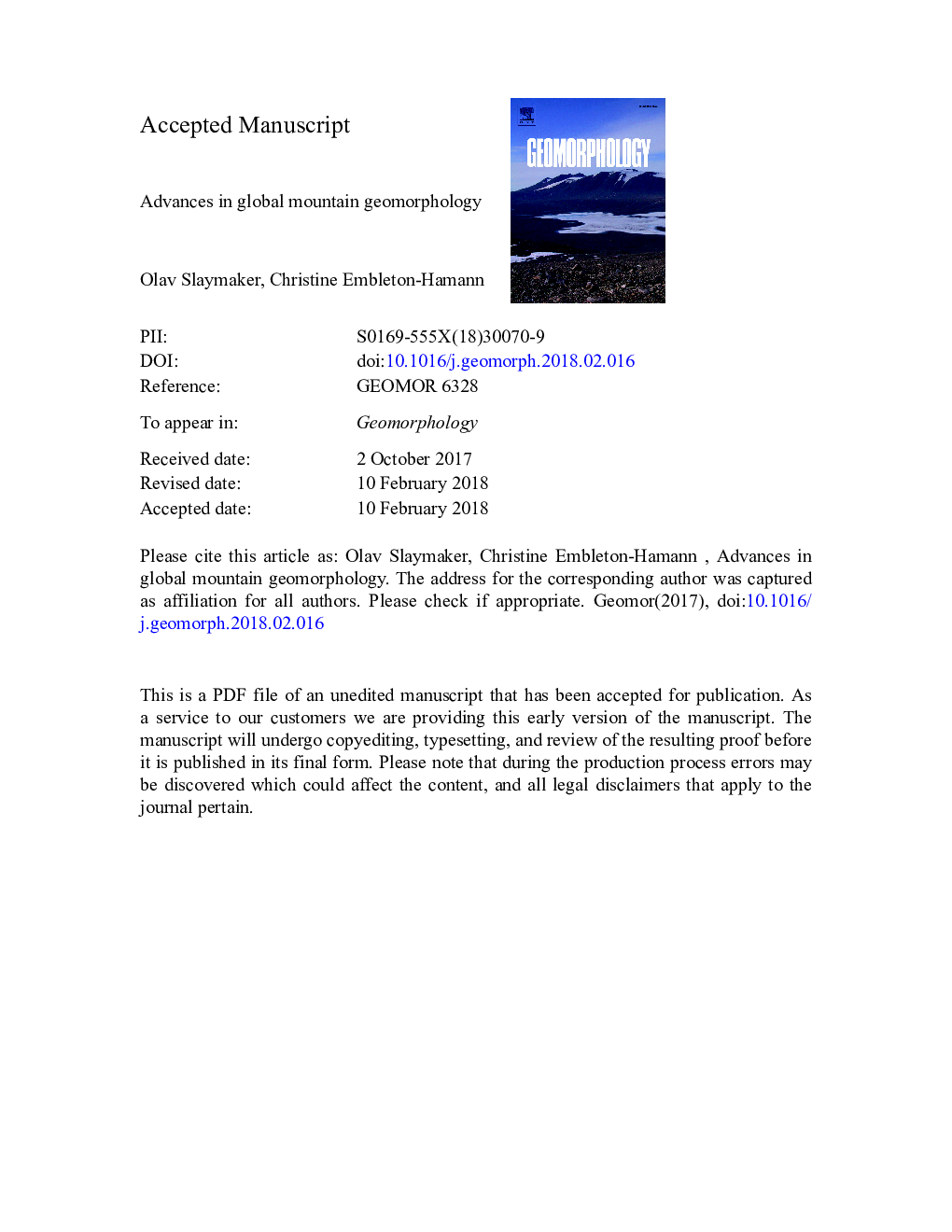| Article ID | Journal | Published Year | Pages | File Type |
|---|---|---|---|---|
| 8908090 | Geomorphology | 2018 | 115 Pages |
Abstract
Three themes in global mountain geomorphology have been defined and reinforced over the past decade: (a) new ways of measuring, sensing, and analyzing mountain morphology; (b) a new emphasis on disconnectivity in mountain geomorphology; and (c) the emergence of concerns about the increasing influence of anthropogenic disturbance of the mountain geomorphic environment, especially in intertropical mountains where population densities are higher than in any other mountain region. Anthropogenically induced hydroclimate change increases geomorphic hazards and risks but also provides new opportunities for mountain landscape enhancement. Each theme is considered with respect to the distinctiveness of mountain geomorphology and in relation to important advances in research over the past decade. The traditional reliance on the high energy condition to define mountain geomorphology seems less important than the presence of unique mountain landforms and landscapes and the distinctive ways in which human activity and anthropogenically induced hydroclimate change are transforming mountain landscapes.
Related Topics
Physical Sciences and Engineering
Earth and Planetary Sciences
Earth-Surface Processes
Authors
Olav Slaymaker, Christine Embleton-Hamann,
